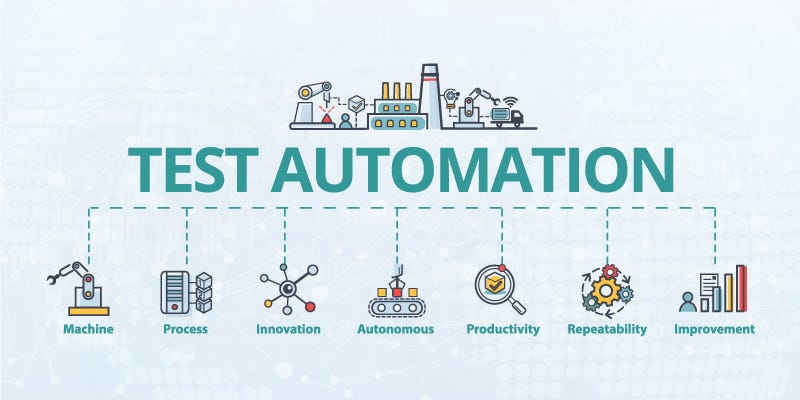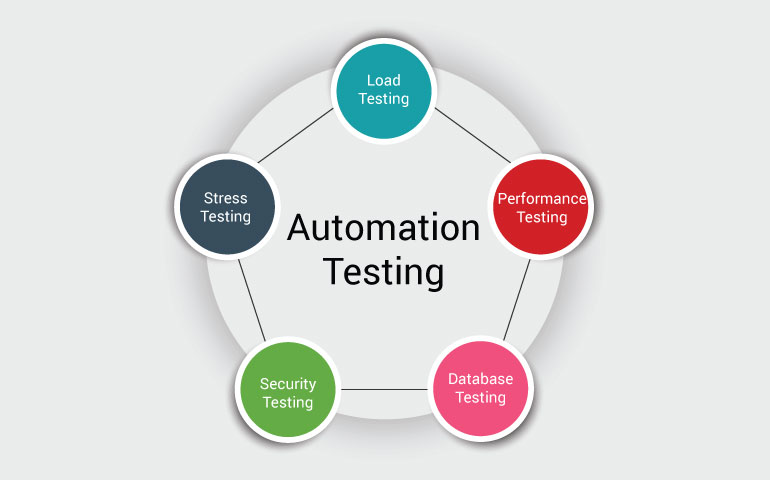The Significance of Automation Testing in Agile Development Environments
The Significance of Automation Testing in Agile Development Environments
Blog Article
Making Certain Success in Automation Checking: Key Metrics, Difficulties, and Solutions Every QA Group Ought To Know
In the world of software program quality assurance, the landscape of automation testing is ever-evolving, demanding a meticulous approach to make certain smooth operations. The journey to mastering automation screening is paved with nuances that require an eager eye for surveillance, analysis, and continuous improvement. As the sector thrusts onward, the mission for optimal performance in automation testing remains a consistent quest, advising QA teams to outfit themselves with the expertise and approaches essential for triumph.
Relevance of Secret Metrics
Understanding the relevance of crucial metrics is vital for reviewing the efficiency and efficiency of automation testing procedures. Key metrics act as quantifiable measures that offer valuable understandings into numerous facets of the testing procedure, such as examination insurance coverage, examination implementation time, problem density, and examination case performance. By evaluating these metrics, QA teams can recognize bottlenecks, inefficiencies, and locations for improvement within their automation screening framework.
One critical element of key metrics is their capability to track progress and check the overall wellness of the testing process (automation testing). They allow stakeholders to make informed decisions based on data-driven insights, which can lead to more reliable testing techniques and far better resource allocation. Furthermore, essential metrics can aid teams established reasonable goals, gauge the success of automation efforts, and show the ROI of automation testing efforts

Common Obstacles Faced
Challenges typically run into in automation testing processes can significantly impact the overall efficiency and effectiveness of QA groups. Among the significant obstacles is the choice of the ideal test situations for automation. Not all test situations are appropriate for automation, and selecting the incorrect ones can cause lost time and resources. Additionally, maintaining test scripts can be a challenging task, especially as the application goes through regular modifications. Examination manuscript upkeep calls for continual updates and alterations to guarantee they mirror the existing capability precisely. One more common challenge is the first financial investment needed for establishing automation frameworks and tools. This can be a barrier for some organizations, specifically smaller sized ones with restricted budgets. In addition, automation testing may not cover all facets of testing, such as functionality and customer experience testing, which still require hands-on intervention. Getting over these challenges needs correct planning, strategic test situation choice, robust maintenance processes, appropriate resources, and a clear understanding of the constraints of automation testing.
Effective Solutions for Challenges
To address the obstacles experienced in automation testing, executing efficient services is vital for improving the efficiency and efficiency of QA teams. One vital remedy is to buy robust training programs for QA groups to ensure they have the necessary abilities to successfully utilize automation devices. Training can connect knowledge voids, enhance understanding of automation frameworks, and boost scripting capabilities, ultimately bring about much more efficient test creation and implementation.
Another essential service is to develop clear communication networks within the QA team and with various other stakeholders, such as developers and task managers. Efficient communication assists in straightening expectations, sharing progress updates, and immediately attending to issues or obstacles that may emerge during the imp source automation screening procedure.

Tracking and Evaluation Strategies
Applying efficient tracking and evaluation methods is important for guaranteeing the success and effectiveness of automation screening processes. In addition, analyzing examination outcomes and metrics offers useful insights right into the quality of the software program being examined and the efficiency of the screening technique.
One trick method in monitoring and evaluation is using control panels that settle relevant metrics and KPIs in an aesthetically accessible layout. These dashboards use an extensive review of test implementation status, examination protection, defect patterns, and various other crucial details. On useful source a regular basis reviewing and evaluating these control panels can help QA groups make educated decisions, prioritize jobs, and maximize screening efforts.
Additionally, executing automated informs and notices based upon predefined limits can boost aggressive monitoring and timely intervention. By establishing informs for efficiency inconsistencies or test failures, teams can attend to concerns promptly and prevent them from escalating. In general, tracking and evaluation techniques play a vital role in guaranteeing the efficiency and success of automation screening campaigns.
Continual Improvement Techniques
Enhancing the effectiveness of automation screening procedures requires the regular improvement of techniques and strategies. Continual renovation techniques are critical for QA groups to adjust to developing technologies and supply high-quality software. One essential approach to boosting automation testing procedures is to carry out regular evaluations and retrospectives. By evaluating previous screening cycles, teams can recognize bottlenecks, inefficiencies, and locations for enhancement. Implementing comments loops and incorporating lessons found out right into future screening frameworks can yield significant improvements with time.

Final Thought
To conclude, it is critical for QA groups to comprehend the key metrics, obstacles, and services in automation screening to make sure success. By very carefully checking and examining data, applying effective remedies to typical challenges, and continually enhancing strategies, QA groups can maximize their screening processes and supply high-grade software program items. Following these practices will inevitably result in more efficient and efficient automation screening practices.
By examining these metrics, QA teams can recognize bottlenecks, inadequacies, and areas for improvement within their automation screening framework.
Furthermore, key metrics can assist teams established realistic goals, gauge the success of automation initiatives, and demonstrate the ROI of automation testing efforts.
Obstacles typically come across in automation testing procedures can substantially impact the general performance and effectiveness of QA groups. Automation screening may not cover all elements of screening, such as usability and customer experience testing, which still need hands-on treatment.In final thought, it is critical for QA groups to recognize the vital metrics, obstacles, and solutions in automation screening to make sure success.
Report this page